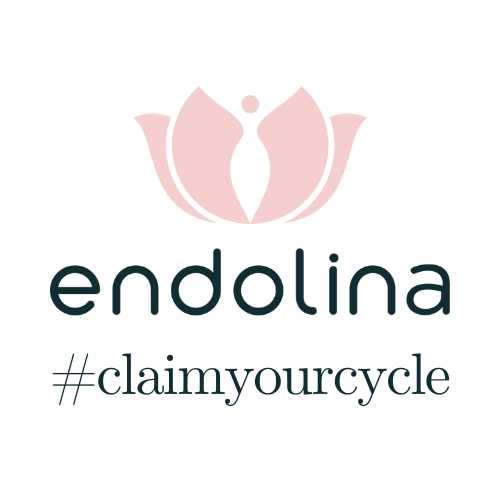Ovulation, the process of releasing an egg from your ovaries, is a natural part of the menstrual cycle. While many people don’t notice it, up to 40% experience some discomfort or pain during ovulation, known as mittelschmerz. For some, however, this pain may be a sign of an underlying condition like endometriosis. Let’s explore the connection between ovulation pain and endometriosis, and what you can do to manage it.
What Is Ovulation Pain?
Ovulation pain occurs mid-cycle, usually on one side of the lower abdomen, where an ovary releases an egg. It is generally mild and lasts no more than 48 hours. However, if the pain is severe, persistent, or disrupts your daily life, it may indicate a condition like endometriosis.
Why Can Endometriosis Cause Ovulation Pain?
Endometriosis affects about 1 in 10 individuals and occurs when tissue similar to the uterine lining grows outside the uterus, often on the ovaries, fallopian tubes, or pelvic walls. This misplaced tissue responds to hormonal changes, leading to inflammation, swelling, and pain throughout the cycle, including during ovulation.
Here are some ways endometriosis might amplify ovulation pain:
- Pelvic Inflammation: Endometrial-like tissue in the pelvis becomes inflamed during ovulation, irritating nearby areas.
- Adhesions: Scar tissue (adhesions) may form between organs, causing sharp pain when they move during ovulation.
- Endometriomas (Cysts): Blood-filled cysts on the ovaries can enlarge and become tender, causing additional discomfort.
Where Might You Feel Endometriosis-Related Pain?
Endometriosis pain varies widely and can occur in:
- Lower abdomen or back: Common areas for cramping or sharp pain.
- Bowel or bladder: Pain may arise during urination or bowel movements.
- Unusual areas: In rare cases, pain might occur in the chest, neck, or diaphragm, depending on where the endometrial tissue grows.
Accurately describing your pain to a doctor—its location, intensity, and timing—can help them better understand and diagnose the condition.
Signs Your Ovulation Pain Might Be Due to Endometriosis
While ovulation pain is usually mild and short-lived, endometriosis-related ovulation pain may present as:
- Severe, sharp, or prolonged pain lasting more than 48 hours.
- Pain accompanied by vomiting, diarrhea, or nausea.
- Pain during sex, urination, or bowel movements.
- Heavy or painful periods outside of ovulation.
If you notice these symptoms, it’s important to consult a doctor for further evaluation.
Managing Endometriosis Pain
While endometriosis can be challenging, there are several ways to manage the pain:
1. Over-the-Counter Medication
Anti-inflammatory drugs like ibuprofen or naproxen can help reduce inflammation and pain. Always consult your doctor before starting any medication.
2. Self-Care Practices
- Heat Therapy: Applying a heating pad to your lower abdomen or back can ease cramps.
- Gentle Movement: Light exercises like yoga or walking may help relieve pain.
- Relaxation Techniques: Warm baths and mindfulness practices can support overall comfort.
3. Medical Treatments
Your doctor may recommend:
- Hormonal Therapy: Birth control pills or medications to suppress ovulation.
- Prescription Pain Relief: Stronger medications for more severe symptoms.
- Surgery: In some cases, laparoscopy can remove endometrial tissue and improve symptoms.
When to See a Doctor
Pain that disrupts your daily life is not normal and warrants medical attention. Talk to your doctor if:
- Ovulation pain is severe or lasts longer than a couple of days.
- You experience pain during sex, urination, or bowel movements.
- You have additional symptoms of endometriosis, such as heavy periods or chronic pelvic pain.
Even if you don’t suspect a problem, scheduling annual check-ups with your gynecologist is essential for overall reproductive health.
Final Thoughts
Ovulation pain is common, but when it becomes severe or persistent, it might indicate endometriosis or another underlying condition. By tracking your symptoms and seeking medical advice, you can identify patterns and receive the right care.
Endometriosis can feel overwhelming, but with proper management, you can regain control and live more comfortably. Be proactive, speak openly with your doctor, and explore all available treatment options.
References
Armour, Mike, et al. “Exercise for Dysmenorrhoea.” Cochrane Database of Systematic Reviews, 2019.
https://doi.org/10.1002/14651858.CD004142.pub4
Cleveland Clinic. “Ovulation Pain.”
https://my.clevelandclinic.org/health/diseases/9134-ovulation-pain-mittelschmerz
Drabble, Sarah J., et al. “Constellations of Pain: A Qualitative Study of the Complexity of Women’s Endometriosis-Related Pain.” British Journal of Pain, 2021.
https://doi.org/10.1177/2049463720961413
NHS. “Endometriosis.”
https://www.nhs.uk/conditions/endometriosis/
Mayo Clinic. “Endometriosis: Symptoms and Causes.”
https://www.mayoclinic.org/diseases-conditions/endometriosis/symptoms-causes/syc-20354656

